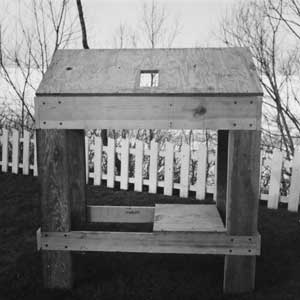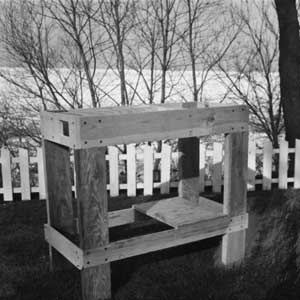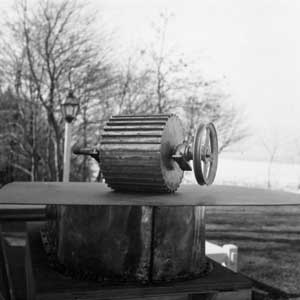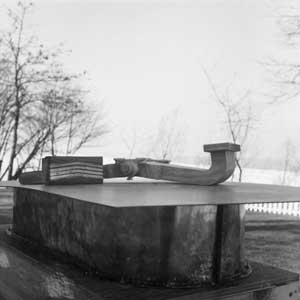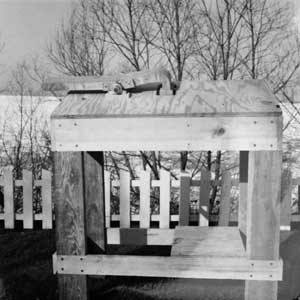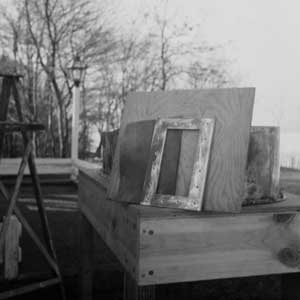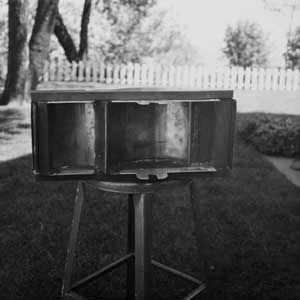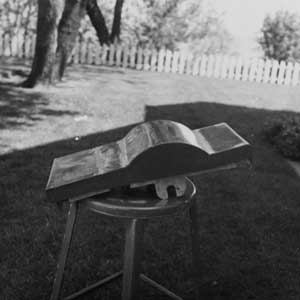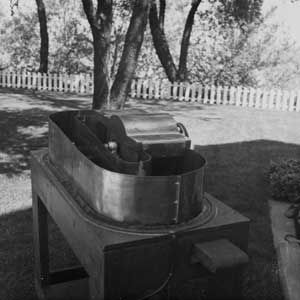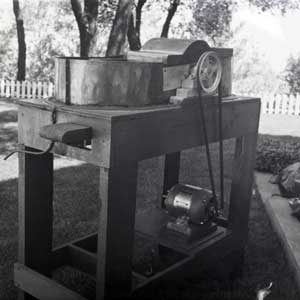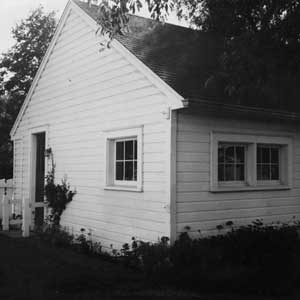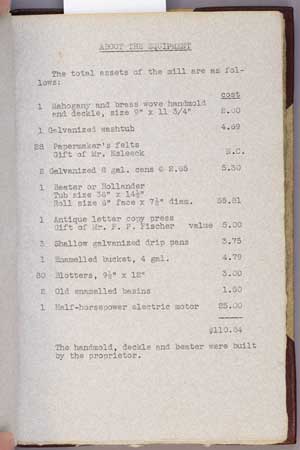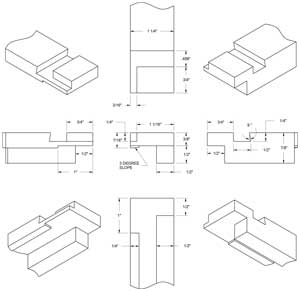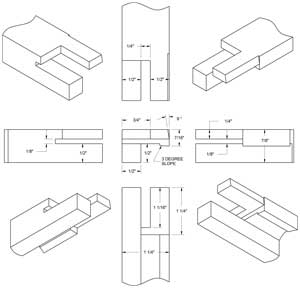European Hand Papermaking: Traditions, Tools, and Techniques
About the Book
European Hand Papermaking: Traditions, Tools, and Techniques was written by Timothy Barrett and published by The Legacy Press in Ann Arbor, Michigan, in 2018. It is first and foremost an instruction manual for those interested in European style hand papermaking. Sections on traditional historical techniques, tools and equipment, and suppliers are included. Throughout the text there are coded X1, X2, X3, etc. references to internet links. Click on the Internet Links menu title on the left to get to the links, but note that the book is required to provide proper context. Likewise with the Films/Videos and Other Resources menu titles. Copies of the book may still be available at http://www.thelegacypress.com/barrett-papermaking.html
If the book is out of print at the time you are reading this, try https://www.bookfinder.com to locate a copy. Please note that royalties from the sale of the book are being donated to support the educational mission of The University of Iowa Center for the Book.
Disclaimer- The tools, equipment, and procedures described in the aforementioned book and this companion website are presented with attention to proper use. However, the reader/viewer is solely responsible for his or her own safety, and the authors and publisher assume no liability whatsoever for the success of any product or procedure, or any injury or mishap that may occur.
Internet Links
Live links for the printed blue X# codes appearing in the book follow below. Note that due to author oversight there are no X codes or links for X8, X40, or X80. In the case of dead or incorrect links, please email the author at timothy-barrett@uiowa.edu, subject line BOOK LINK PROBLEM.
X1 http://paper.lib.uiowa.edu/index.php
X2 http://paper.lib.uiowa.edu/european.php
X3 http://www.youtube.com/watch?v=Xs3PfwOItto
X4 http://www.youtube.com/watch?v=e-PmfdV_cZU
X6 http://paper.lib.uiowa.edu/conclusions.php#stability
X6a http://muse.jhu.edu/article/214500
X7 http://www.moulinduverger.com/papier-main/article-42.php
X9 http://paper.lib.uiowa.edu/chron.php
X10 https://www.youtube.com/watch?v=bggttPftmVs
X12 http://carriagehousepaper.com
X13 https://www.worldwildlife.org/industries/cotton
X14 http://carriagehousepaper.com/supplies
X15 http://paper.lib.uiowa.edu/conclusions.php#stability
X15a http://cool.conservation-us.org/byorg/abbey/ap/ap09/ap09-1/ap09-109.html
X16 http://cool.conservation-us.org/jaic/articles/jaic17-02-003.html
X18 http://paper.lib.uiowa.edu/european.php#retting
X19 http://grayhall.co.uk/BeloitResearch/tappi/t227.pdf
X20 http://grayhall.co.uk/BeloitResearch/tappi/t200.pdf
X23 http://www.papermakingresources.com/pdf/BeaterFinessefortheArtist_final.pdf
X24 https://www.youtube.com/watch?v=Xs3PfwOItto
X25 https://www.museodellacarta.com/it/video.html & https://www.youtube.com/watch?v=TOoP4VStx88
X26 https://www.youtube.com/watch?v=DP1H2PmvhEA
X27 https://www.youtube.com/watch?v=e-PmfdV_cZU
X28 https://www.youtube.com/watch?v=ndFGj2tM2yk
X29 https://apps.apple.com/us/app/magnolia-paperweight/id1521170681
X30 https://www.magnoliapaper.com/
X31 http://cool.conservation-us.org/byorg/abbey/an/an17/an17-4/an17-407.html.
X32 https://www.youtube.com/watch?v=bggttPftmVs
X33https://www.youtube.com/watch?v=e-PmfdV_cZU&t=267s
X34 https://www.youtube.com/watch?v=Mutsj0Olh-E
X35 https://www.youtube.com/watch?v=bggttPftmVs&t=4s
X36 http://dardhunter.blogspot.com/2012/10/watermarks-conference-part-i-winsome.html
X37 https://www.youtube.com/watch?v=n4rEEydyphs
X38 https://www.uvm.edu/~ewb/Documents/Grey%20Water%20in%20Developing%20Countries.pdf
X41 http://www.davidreinadesigns.com/beater/
X42 http://carriagehousepaper.com/supplies/equipment
X43 http://www.davidreinadesigns.com/reina-beater/
X44 https://www.toolsforpaper.com
X45 https://gentenaar-torley.nl/beater/
X46 http://marklander.org/hollander-beaters/
X48 https://www.indiamart.com/bramcoengineers/
X49 http://grayhall.co.uk/BeloitResearch/tappi/t200.pdf
X50 https://www.magnoliapaper.com
X51a http://wanderingbookartists.blogspot.com/2019/03/papel-texanos-mad-scientist-papermaker.html
X52 http://carriagehousepaper.com/aardvark-press
X53 http://www.davidreinadesigns.com & https://www.harborfreight.com/20-ton-shop-press-32879.html & https://www.harborfreight.com/50-ton-hydraulic-shop-press-96188.html
X54 https://www.magnoliapaper.com
In Resources and Downloads, go to Determinate Hand Papermaking, then see Chapter XI Drying.
See the Section on Back Marks
X54b https://www.homedepot.ca/en/home/p.20-inch-x-30-inch-rubber-pin-door-mat.1000842739.html
X55 https://www.magnoliapaper.com
Go to “Determinate Papermaking” then pages 20-21.
X56 http://www.springer.com/us/book/9780751402124
X56a http://cargocollective.com/oldway/Contact-Us
X57 http://carriagehousepaper.com
X60 https://carriagehousepaper.com/flax-fiber-unbleached-type-r-742
X61 http://www.pierret.com/en/coupeuses/p26/
X62 https://www.hach.com/p-iron-test-strips-total-dissolved-iron-0-5-mgl/2745325
X63 https://www.plumbingsupply.com/aquapurefilters.html
X64 https://www.geapplianceparts.com/store/parts/spec/GXWH20S
X66 https://www.culligan.com/product/smart-he-iron-cleer-whole-house-water-filter
X67 https://www.mcmaster.com/#hose-reels/=1acbj0x
X68 https://www.walmart.com/ip/Gardena-Classic-Tap-to-Hose-Quick-Connect-Connector-Kit/144498823
X69 https://www.homesciencetools.com/chemistry/balances-digital-scales/
X70 https://digital.library.unt.edu/ark:/67531/metadc123539/m2/1/high_res_d/metric-2.pdf
X72 https://www.mcmaster.com/#calcium-hydroxide/=1a31con
X73 Rather than the Cary Co., try reaching out to the Kish Co. for a retail supplier at http://www.kishcompany.com/index.php or purchase smaller quantities of ground calcium carbonate from Carriage House at https://carriagehousepaper.com/calcium-carbonate-585
X73a https://www.axner.com/magnesium-carbonate.aspx
X75 https://www.testingmachines.com/product/72-16-valley-laboratory-beater
Note that as of early 2024 the price would be $38,000, solid stainless steel, made in Spain.
X76 https://www.mcmaster.com/#current-panel-meters/=1ceucxc
X77 http://www.davidreinadesigns.com
X78 https://www.mcmaster.com/products/waste-container-caddies/
X79 https://www.mcmaster.com/#box-trucks/=1amlfd7
X81 https://www.industrialnetting.com/products.html
“The WN0300 (https://www.industrialnetting.com/wn0300-72-300-micron-nylon-woven-mesh.html) is as close as we’d have. It comes in a 72” width and is priced at $8.13 per lineal foot (+ shipping), $100 order minimum . . . so you’d have to order at least 13 lineal feet. The fastest way to place the order is to call our main line (1-800-328-8456) and ask for customer service to place an order with credit card (the credit card has to be called in – it can’t be sent via e-mail). Just cite the part # and the folks in customer service will be able to help you in the most expedient fashion.”
X82 http://www.sandpiperpump.com/pumps/heavy-duty-flap
X83 http://www.vectorpump.com/product/operation-peristaltic-pumps.html
X84 https://www.usplastic.com/catalog/item.aspx?itemid=25472
X85 https://my.clevelandmixer.com/assemblies/52
X86 https://www.imperialsupplies.com/item/9180311
X88 http://carriagehousepaper.com/supplies/moulds-deckles
X89 Simon Green at Hayle Mill no longer has moulds available. Contact Alejandro Geiler at Papermaker51@hotmail.com regarding availability of his moulds.
X90 https://www.eifeltor-muehle.de/papiermacherprodukte/sch%C3%B6pfsiebe
X91 http://www.formesdepapetiers.com/formesdepapetiers/les_formes_%C3%A0_papier.html
X92 http://www.papertrail.ca/blog/index.php/products/moulds-and-deckles/
X93 https://www.toolsforpaper.com/contact/
X94 http://papermouldmaker.com
X95 http://users.trytel.com/~brittq/mould.htm#equip
X96 http://www.chestercreekpress.com/moulds.html
X97a https://parawire.com/craft-store/bare-brass-wire/ or https://parawire.com/craft-store/bare-copper-wire/
X97b https://www.mcmaster.com/#standard-copper-wire/=1amms0o
X97c https://www.mcmaster.com/#standard-wire-mesh/=1aceiu4
X98 https://www.zoro.com/devcon-pourable-epoxy-aluminum-1lb-10710/i/G3177912/
X99 http://carriagehousepaper.com/search/?q=felts
X100 http://www.thefeltcompany.com/f-50-wool-felt-1-16-thick-x-60-wide/
X101 https://www.grainger.com/product/BAILEIGH-INDUSTRIAL-Scissor-Lift-Cart-31XU05
X102 http://carriagehousepaper.com/supplies/equipment
X103 http://www.talasonline.com/Blotting-Paper-Unbuffered-Alpha-Cellulose
X104 http://www.talasonline.com/Cotton-Blotting-Paper
X105 https://www.uline.com/BL_1855/Heavy-Duty-Corrugated-Pads?keywords=Sheet+Cardboard
X106 https://www.toolsforpaper.com/new-index/
X107 https://www.mcmaster.com/#webbing-tie-down-components/=1cf9rpw
X108 https://www.lawrence.co.uk/product/12-print-ball-drying-rack
X109 http://www.marblekingusa.com/test-2.html
X110 https://www.mcmaster.com/#standard-fibrous-cords/=1amzbf5
X111 https://www.mcmaster.com/#wire-shelving/=1acelpa
X112 http://carriagehousepaper.com/gelatin-sizing-576
X113 http://www.talasonline.com/Zen-Shofu-Japanese-Wheat-Paste
X115 https://www.farmandfleet.com/products/906097-valley-view-empty-spray-bottle.html
X117 http://www.talasonline.com/search?keywords=bone%20folders
X118 http://www.cbar.us/carbide-rods-inches-s/118.htm
X119 http://clayfactory.net/cernit/cernit-polymer-clay-500-gram-and-doll-colors-.html
X120 https://polyclayplay.com/clay-polymer-and-more/cernit/
X121 https://www.twinrockerhandmadepaper.com/pa_main.php
X122 https://store.hiromipaper.com/collections/sample-books
X123 http://www.talasonline.com/Abbey-pH-Pen
X124 https://www.hollingermetaledge.com/abbey-ph-testing-pen/
X125 https://www.magnoliapaper.com
X126 https://www.amazon.com/LUMAND-Flashlight-Keychain-Currency-Passports/dp/B00NOFMJKW
X127 http://www.davidreinadesigns.com
X129 https://book.grad.uiowa.edu
X130 https://slis.ua.edu/mfa-in-book-arts/
X131 https://www.philobiblon.com/programs.shtml
X132 https://www.uarts.edu/academics/camd-cross-college-programs/mfa-book-arts-printmaking
X134 http://www.lib.utah.edu/collections/book-arts/academic/
X136 http://handpaper.freyerweb.at/about.php?lang=en
X137 http://helenhiebertstudio.com/products/how-to-books/
X138 https://helenhiebertstudio.com/product-category/films/
X139 http://paper.lib.uiowa.edu/epm
X142 https://www.arrowmont.org
X143 https://www.haystack-mtn.org
X144 https://uicb.uiowa.edu/programs
X145 https://www.dickblick.com/products/liquitex-gel-mediums/
X146 https://www.combatpaper.org
X147 http://www.peacepaperproject.org/index.html
X148 http://www.peacepaperproject.org/pulp_printing.html
X149 http://helenhiebertstudio.com/products/water-paper-time/
X150 http://handpaper.freyerweb.at/index2.php?c=3&lang=en
X151 http://www.paperhistory.org/Museums/
X152 http://handpaper.freyerweb.at/index2.php?c=2&lang=en
X153 https://friendsofdardhunter.org
X155 http://handpapermaking.org
X156 http://papermakers.grad.uiowa.edu
X157 http://www.papermakingresources.com/pdf/BeaterFinessefortheArtist_final.pdf
X159 http://ihl.enssib.fr/paper-and-watermarks-as-bibliographical-evidence/the-shape-of-paper
X161 http://www.tappi.org/content/SARG/T435.pdf
X161a https://www.complianceonline.com/images/supportpages/501024/sample_T509.pdf
X162 https://www.handpapermaking.org/search?
X163 http://helenhiebertstudio.com/products/the-papermakers-studio-guide/
X164 https://www.degruyter.com/view/j/rest.2016.37.issue-2/res-2015-0017/res-2015-0017.xml
X165 http://grayhall.co.uk/BeloitResearch/tappi/t200.pdf
X166 https://www.complianceonline.com/images/supportpages/501025/sample_T511.pdf
X167 https://file.yzimgs.com/175706/2011090910054271.pdf
X168 http://handpapermaking.org/?page_id=20
X169 http://helenhiebertstudio.com/products/water-paper-time/
X171 http://www.baymoon.com/~peteranddonna/Papermaking%20books%20at%20Iowa.htm
I believe there is more to the Voorn collection than the materials shown at this link. Contact a librarian there to request more information on the entirety of the Henk Voorn Collection.
X174 http://handpaper.freyerweb.at/index2.php?lang=en
X175 https://www.goodreads.com/quotes/3228751-interbeing-if-you-are-a-poet-you-will-see-clearly
X176 https://www.youtube.com/watch?time_continue=1&v=DHbDWhj-iOc
X177 https://www.youtube.com/watch?v=DZaaEt0IaoQ&feature=youtu.be
X178 https://www.eastmancuts.com/product-category/products/manual-products/round-knives/
Films and Videos
Click on the title in the listing below to go to a specific film/video. Or, to see all available films/videos associated with the book at once, click on the following link. https://www.youtube.com/playlist?list=PLaLWoNF6j2cm_FR9TGiacPTqpd8-iTV1b
You may utilize any of the following for educational purposes but permission is required for editing or use in other media or venues. Write timothy-barrett@uiowa.edu
Hint: For the best viewing quality, before watching a video, at the bottom of the YouTube screen click on the Settings (gear) icon, then Quality, and choose the highest available setting that still allows smooth viewing with your device and internet connection.
*Note that not all resources have a Z code that appears in the text of the book.
UICB Western I Hand Papermaking
Instructional video on basic European-style hand papermaking techniques. Produced by The University of Iowa Video Center and the UI Center for the Book in 1994. Both this and the Western II video folllowing are dated but still contain useful information. This video goes through all of the steps in making beater test sheets and covers other basic steps in the process as well. In retrospect, in the sheet-forming instruction scene, the vat was set up higher than it should have been. The surface of the pulp and water mixture should be about 5 inches below the vatperson’s waist.
Z1 UICB Western II Hand Papermaking
Instructional video on intermediate European-style hand papermaking techniques. Includes a final segment showing our only partly successful attempt to install a fully automated pulp-delivery system, complete with a (diaphragm flat screen) knotter. After using it for several weeks in the production of one order, we shut it down, mainly because of the large amount of pulp required to get everything up and running, the poor flow of pulp from the stuff chest, and persistent issues with the flat screen clogging. Produced by The University of Iowa Video Center and the UI Center for the Book in 1994.
Z2 Ergonomics of Hand Papermaking
An excellent video by Lynn Amlie on how to reduce the chances of injury when making paper by hand.
Z3 A Mouldmaker’s Loom- Making Wire Facings and Backings
Operation of a loom designed and built by Timothy Moore for weaving surfaces used in the construction of hand papermaking moulds. Short videos on related topics follow. Video and editing by Timothy Moore, 2018.
Papermaking by Hand
Documentation of operations at Hayle Mill, Maidstone, Kent. Hayle Mill was England’s last production hand paper mill until it closed in 1987. Digital transfer from a copy of the original 16mm film. Directed by Dr. R. L. Hills and produced with the help of the Manchester Institute of Science and Technology in 1976, possibly earlier. Note that the narrator mispronounces the term coucher as if it were the “couch” or sofa in one’s living room, rather than “coocher” which is correct and more close to the original French pronunciation of the verb se coucher. Also, the beaterman in the film, is not checking the consistency (which means the percent fiber in water) with the bowls but the fiber length, degree of fibrillation etc.
Z4 Chancery Papermaking at the University of Iowa Center for the Book, 2013
Details on the three-person vat team utilized for hand papermaking experiments by Tim Barrett and student co-workers at The University of Iowa Center for the Book. Gelatin sizing is included however, fermentation of the raw material, which we began to put into use later, does not appear and would normally occur just prior to cooking. Reference is made to the possibility of making 1,500 or 2,000 sheets in a day, but no attempt was made in 2013. Direction and narration by Tim Barrett. Video content production by Avi Michael, Play Right Productions, 2013.
Chancery Papermaking: an attempt at 2000 sheets in a single day
Tim Barrett and student co-workers at The University of Iowa Center for the Book attempt to make 2000 sheets in one day. It did not work out because the fiber, a rag half-stuff, drained too slowly to permit faster work. Produced by Tim Barrett and Barry Phipps. Filmed and edited by Barry Phipps and Jason Smith with music by Clara Van Gogh, 2014.
Chancery Papermaking 2016: 2000 Sheets in One Day
Tim Barrett and student co-workers at The University of Iowa Center for the Book succeed at making 2000 sheets in one day in large part due to the use of short cotton linters that can be beaten to give a well-formed sheet that still drains rapidly. Narration by Timothy Barrett, cinematography by Barry Phipps, music by W. W. Lowman, 2016.
“Papier Bereiding-Oudhollands Papier” [Old Dutch Papermaking]
A silent, black-and-white film that documents papermaking as it was practiced in a “living museum” atmosphere; ca. 1935? Most of the equipment appears to be authentic, but the workers shown are not skilled papermaking artisans. Despite its weaknesses, this the best-known film documenting how the craft looked prior to the nineteenth century. Stamper beaters and a Hollander beater are shown in operation.
“Paper: The Pacemaker of Progress.”
Springer Films’ “Paper: The Pacemaker of Progress,” 1945. This film stands on its own as an impassioned endorsement of the paper industry shortly after the end of World War II, with a F. C. Huyck Company sponsored emphasis on the importance of the felt industry to the paper trade. For the purposes of understanding the details of hand papermaking, the segment of interest begins at 5:30 when a period hand papermaking re-enactment was performed by British workers at Dard Hunter’s Lime Rock Connecticut Paper Mill. At 5:50 the vatman’s shake is seen in some detail. The hand papermaking sequence runs until about 8:20 but the remainder of the film is interesting in many respects.
Making 36 by 36 inch sheets of handmade paper
Production of large sheets of paper at The University of Iowa Center for the Book circa 1999. The finished paper was a component in the “Charters of Freedom” re-encasement project at the National Archives Rotunda in Washington DC. Papermakers Lynn Amlie and Sara Langworthy; assistant Jon Lee. UICB air bladder press is shown in operation. Video and editing by John D. Freyer circa 1999.
Z5 Student Sheet Forming at the UICB
UI Center for the Book sheet forming. Repetitive motion studies for consideration and critique. Student papermakers in order of appearance: Elise Hochhalter, Sarah Luko, Tim Barrett and Johan Solberg. Video by Johan Solberg, 2018.
“The Vatman at Work”
Institute for Bibliography and Textual Criticism
University of Leeds Television Service
Made under the direction of John Horden at the Institute of Bibliography at Leeds in the 1970s. The film is black and white and silent. It is believed to be the only film that shows the repeated motions of the vatman and coucher at work together for a relatively prolonged period of time. As a motion study, this is a valuable document for paper historians and young students of the craft. The film was shot at Hayle Mill as identified by the stuff chest behind the vat. [If you know of the location of a 16mm original copy of this film please contact timothy-barrett@uiowa.edu] Special thanks to Ray and Diane Tomasso for making the YouTube link to this video available.
Other Resources
Wegand Tightwad Beater book scan
Weygand, James Lamar. The Wegand Tightwad Beater: Its Design and Construction. Nappanee, Ind., Press of the Indiana Kid, 1970. Peter Thomas Collection, University of Iowa Special Collections. Thanks to Yama Ploskonka for the scans.Wegand Tightwad Beater Corrections
Laws Beater photographs
Laws, Arthur J. Handmade Paper. Avon Lake, Ohio: Arthur J. Laws, 1960. Volume 2. Peter Thomas Collection, University of Iowa Special Collections. Photographs only are provided here. There is no known written documentation of the steps that Laws took to build his beater, but it is evident that he used a Valley laboratory beater as his design model. The dimensions (tub size 36 x 14.5 inches, roll size 6 in. face by 7.5 in. diameter) match those of a standard Valley. One note in his brief typewritten text indicates that he spent $54.00 on materials for the beater and $50 for a ½-horsepower motor. This would amount to about $500 in 2018. One horsepower is the standard for this size beater. Photos by Johan Solberg of original photos by A. J. Laws. Also note that Henry Morris shares additional useful details about Laws’ construction of his beater in Omnibus: Instructions for Amateur Papermakers with Notes and Observations on Private Presses, Book Printing and Some People Who Are Involved in These Activities. North Hills, Penn.: Bird & Bull Press, 1967.
Brian Queen Drawings
Mould and Deckle Drawings and 3D Models
The following drawings contain details including dimensions that could not be included in Appendix C. Mould and Deckle Construction by Timothy Moore. There is no standard design for a European papermaking mould and even a cursory inspection of historic moulds will show a variation in the size and configuration of joints or the size and shape and of a rib. Accordingly these drawings are meant as a starting point for a standard European mould and deckle design. Most of these drawings are based on British papermaking moulds of the last century and designs used by Tim Moore in his practice. Included are 3D models in two different file formats, CAD drawings in two formats and a pdf file. Additional drawings and 3D models will be added as time and interest permits. Note that the standard reference on the subject is Loeber, E.G. Paper Mould and Mouldmaker. Amsterdam: Paper Publications Society, 1982.
Errata
On Page 103, after Velky Losiny: X26
Add
Hayle Mill: X177
On page 139, the reference to "Fig. 50" should be changed to "Figs. 51a–f."
On page 153, Fig. 62 incorrectly appears twice.
On page 159, change X176 to X178 and X177 to X179.
On page 169 under the section on “Building your own beater,” add the following sentence: Drew Mattot has recently posted new information on DIY beater construction at http://www.peacepaperproject.org/DIY_Hollander_Beater.html
On page 216, "And, again," was underlined by mistake; no emphasis intended.
On page 221 at the end of the following paragraph add the lines highlighted below in red.
….place the burnisher on a folded paper towel pad in a tinfoil pie pan or some other baking pan. Place another pan on top and clamp them together at the edges with bulldog clips to minimize any smell from the baking polymer clay. Preheat your oven to 265 degrees F, and bake 30 minutes for every ¼ inch of thickness. For a fist-sized hand grip up to 2 inches thick in places, the total baking time is at least 4 hours, but the final material is quite hard. Extra time will not hurt the clay. Experience has shown that with heavy use, the polished tungsten carbide rod will get very warm and begin to actually turn inside the polymer clay handhold. This is a problem if you have chamfered and polished only one side of the rod. Making a hand hold of wood or baked polymer clay and then cementing the metal rod in place with a metal bonding adhesive such as J-B Weld Kwik Weld High Strength Liquid Automotive Epoxy may solve this problem. Abrading, scoring or notching the hidden side of the rod may also help but remember the Castlebar health concerns cited above.
On page 313, huuver, please strike the first sentence: Pronounced “hover” as in “the helicopter is able to hover.
Addenda
As mentioned on page 126, fermentation can sometimes result in a dark grey or black mold that leaves our finished 50/50 hemp/cotton paper with a slight greyish off-white cast (even after cooking in lime and extended washing during beating), rather than the more desirable warm off-white. According to al-Muʿizz Ibn Bādīs (d. 1062) traditional Islamic world papermakers employed lime pre-treatments rather than fermentation before beating:
“…the flax is soaked in quick-lime, rubbed with the hands, and spread out in the sun to dry. It is then returned to fresh quicklime. This is repeated a number of times. Then it is washed free of the quicklime many times…”
Indo-Islamic and Central Asian papermaking researchers Radha Pandey and Johan Solberg have been experimenting with extended lime water soaks in lieu of fermentation.2 Following their lead, I soak flock cut fiber in a 0.4% calcium hydroxide solution, about 6% fiber on solution, with mixing once a week, for 6-8 weeks. This type of treatment was sometimes referred to as a “cold cook” in the industry. The more concentrated lime solution minimizes any fermentation action. I end the process with a 2-3 hour traditional cook as described on page 62, in a fresh 0.4% calcium hydroxide solution. The results are similar to those achieved with fermentation: reduced beating time and enhanced formation quality compared to working with raw fiber. The impact on the stability of paper made from fermented and cooked vs cold lime solution-soaked and cooked fibers has not been investigated.



